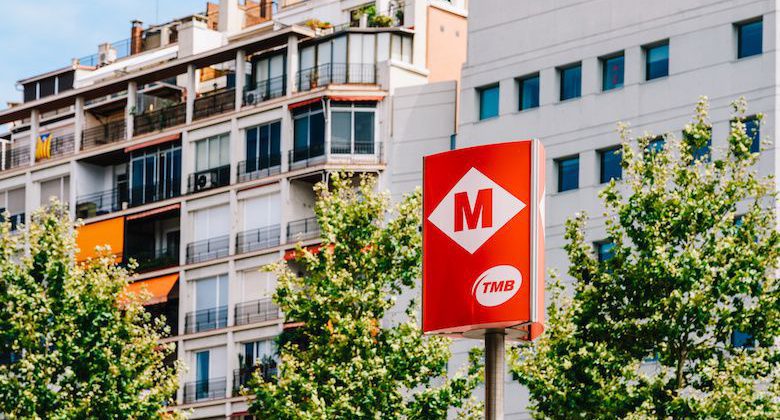While Barcelona is pretty walkable, public transportation in Barcelona is the cheapest way to get around the city. Here’s a convenient guide to how to use the city’s means of transportation.
Barcelona’s Underground System
Barcelona has three metropolitan systems of underground fast trains that allow you to cross the city in less than half an hour. The larger network, the “Metro” (stations labeled “M” in red) has 8 lines and 159 stations.
Some areas, however, are better connected to the city center by the railways of the Catalan government, known as “Ferrocarrils” (stations labeled “FFGG” in blue). You may also see the regional trains of the Spanish railway network (“Rodalies”, labelled “R” in orange).
Traveling by Metro at Night
Metro is always the best choice for traveling at night. It opens from 5 am to midnight on working days, closes at 2 am on Friday, and it opens overnight from Saturday to Sunday. When traveling underground, take care of your belongings as pickpocketing is very common. Pickpockets work in groups and use highly creative distractions and techniques.
Barcelona’s Bus System
The new Barcelona bus lines follow linear paths parallel or perpendicular to the sea (horizontal “H” lines, and vertical “V” lines, respectively), or cross the city diagonally (“D” lines). Buses typically run every 5 minutes.
Look at the label to distinguish between the old and the new lines. Old buses following complex paths through the city are labeled with numbers, while the new ones are labeled with H, V or D followed by a number. Avoid old buses unless they go exactly to your destination because they pass every 20 to 30 minutes.
Trams, Cogwheel Trains and Cable Cars
In 2004, Barcelona invested in a new tram system that now operates in the Forum and the Upper Diagonal districts. The ride in the modern and fast trams is a good way to sightsee some of the fancier areas of the city.
The city is also populated with some scenic and historical transportation devices like funiculars that provide access to the hill of Montjuic, the hilly neighborhood of Vallvidrera, and the Amusement Park of Tibidabo, the cable car climbing to the Castle of Montjuic, and the sky ride above the old harbor built for Barcelona’s 1929 International Exhibition.
Price of all Barcelona Public Transportation
All the public transport of Barcelona (Metro, Ferrocarrils, Rodalies, red and yellow buses, the new tram, and the Funiculars of Montjuic and Vallvidrera) has been integrated into a single tariff system. Tickets and cards are sold in vending machines placed train stations and tram stops.
Buses only sell individual tickets and accept only cash (bills no larger than 10 euros). Once you cancel your tickets or your card, you can commute as many times as needed during 75 minutes.
For all Barcelona public transport:
Single ticket: 2.20€
One day travel card with unlimited trips: 8.60€
T10 card (10 trips for multiple users): 10.20€
Transportation Packages
Other options are the “Up Barcelona” card (27.90€) that provides unlimited travel for 2-days. It also includes two-way tickets to castle of Montjuic and the airport). Also, the “Hop Barcelona” card (52.20€) offers 3 days of unlimited travel, a day on the City Tour Bus and a two-way ticket to the airport.
Consider also the single user T50/30 card (43.50€, 50 trips in 30 days) for longer stays, and the multiple user T70/30 card (60,9€, 70 trips in 30 days) if you are traveling in a big group.



Many thanks for your article about how to use public transportation in Barcelona.
Perhaps is our online navigation system for the metro (subway) in Barcelona useful as well.
https://www.metrocazar.com/barcelona/